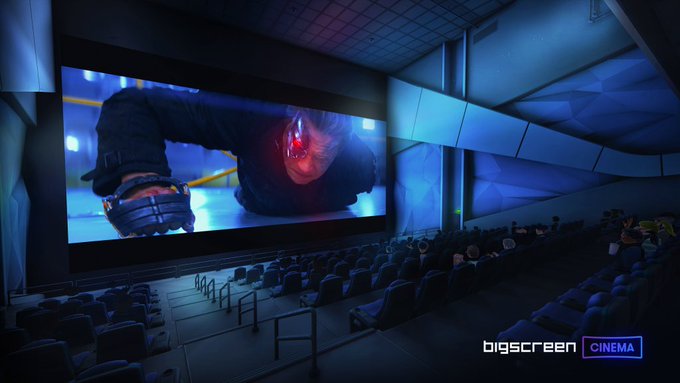VR is always a coming attraction, but this movie deal might make it happen

Paramount Pictures recently signed a deal with Bigscreen that lets you to go to the movies with your friends — from home — just by slipping on your clunky virtual reality goggles. Imagine geeking out over “Star Trek Beyond” with a fellow trekkie on the other side of the world.
To get the hows and whys on this tech and see what else VR companies are hoping will finally move this into the mainstream, I spoke with Dean Takahashi, a writer at VentureBeat, as he was combing through the latest tech at the giant trade show, CES. He talked me through how virtual movie-going would work. The following is an edited transcript of our conversation.
Dean Takahashi: You’re tuning in with an avatar — just an image of yourself — and you go into a specific room, and there’s a cinema screen in front of you. It’s like you’re in a movie theater. You can look around, you can see other seats around you. You can invite your friends in, and their avatars are there. When you say something or talk, make a comment on the movie, the other person can hear you. It’s a shared social experience.
Jack Stewart: I feel like for a lot of people, watching a movie in your living room by yourself is part of the joy of watching a movie. How much do you think VR really adds to the experience?
Takahashi: I think there are certain shows where you want to watch it with someone else. If you’re a “Star Trek” fan, it can be fun to watch it together with people on the same couch and watch with your family. If your kid has gone away to college but you guys still want to have some kind of shared experience — you love watching movies — why not do something like this? Get together, even though you’re not physically in the same place.
Stewart: Is there anything that you’ve reported on or that you’re seeing at CES that you think, “This is it, this is what’s going to lead to VR finally breaking into the mainstream”?
Takahashi: There are glimpses of technology that is coming. There’s a Chinese company here that is doing an 8K VR headset. They’re saying that they can ship this for about $450 or so. Their name is Pimax.
Stewart: So really, high definition, basically.
Takahashi: Yeah, much richer experience. There are ways that companies like Nvidia are working on to reduce the amount of processing power you need to do VR. They have something where they would use eye tracking to track where your eyes are looking on the screen, and then they would render the image very sharply where your eyes are looking, and then the rest of the images where you’re not looking at all blurry so that they’re not wasting their processing power.
Related links: More insight from Jack Stewart
Check out Takahashi’s story on the Paramount-Bigscreen partnership for the details on the deal. It’s a multiyear agreement that will premiere four new movies every Friday, running for a week. There are also details on the type of headsets the service is compatible with at the moment.
For more on VR at CES, check out the Las Vegas Review Journal. Its article opens with a quote from Steve Koenig of the Consumer Technology Association, which organizes CES: “We’re really inching closer and closer to the full holodeck experience.”
Once we do have full holodecks, then yes, count me in.
And I talked to Takahashi about the improvement in the definition of the picture displayed within VR headsets. That matters, because you want it to look as realistic as possible. We have 4K TVs already as the ultimate, so imagine an 8K screen strapped to your face. Engadget has a photo — nothing low profile there — and the cost is around $8,000. But Engadget said it’s meant for enterprise users, NASA or military and defense customers.
But top-end tech today tends to become tech for the rest of us eventually, and it could make watching a virtual movie with your friends as realistic as possible.
There will be more from CES on Friday, when we check in with our own Molly Wood, who’s at the show.
The future of this podcast starts with you.
Every day, the “Marketplace Tech” team demystifies the digital economy with stories that explore more than just Big Tech. We’re committed to covering topics that matter to you and the world around us, diving deep into how technology intersects with climate change, inequity, and disinformation.
As part of a nonprofit newsroom, we’re counting on listeners like you to keep this public service paywall-free and available to all.
Support “Marketplace Tech” in any amount today and become a partner in our mission.



















